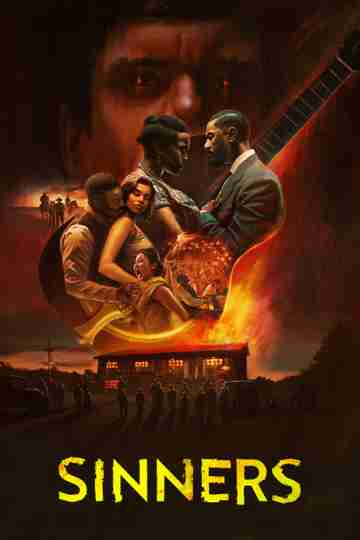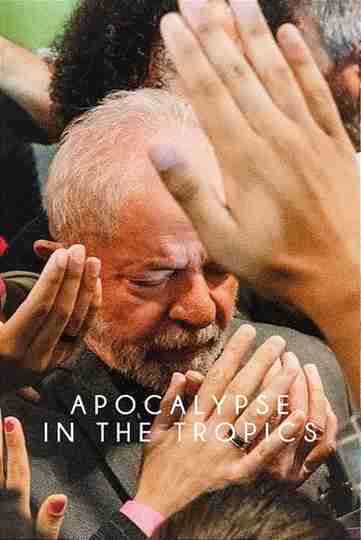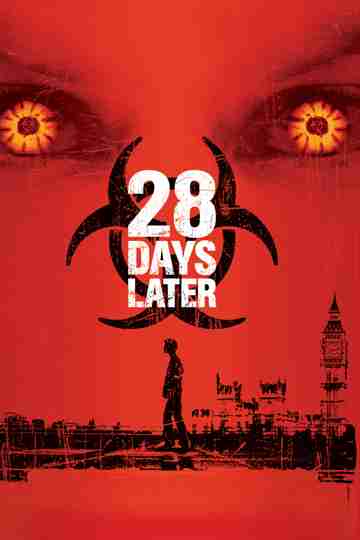Season 1 Plot
Documentary that looks at the unstoppable natural forces that have washed away communities and leveled great cities. Each episode includes survivor interviews, archival news clips and footage of the storms.
Wrath of God: Disasters In America Season 1 aired on June 14th, 1997.
Season 1 Episodes
1. Hellfire
From the History Channel's "Wrath of God" series comes a video showing the horror of fire. Each of the four fires described share a common thread - a large loss of life.
2. Earthquakes: San Francisco 1906 & 1989
Episode highlighting the immense destruction of the 1906 Earthquake that struck San Francisco, and the 1989 quake that hit California.
3. Torrents of Death
Floods can sweep the earth clean before them, uprooting trees and demolishing buildings with ease. Once free, they are all but impossible to contain, and unfortunate victims must simply try to ride out the waters and hope for the best. This authoritative program tells the tragic tales of some of the worst floods the nation has ever seen. Learn the horrifying story of the Johnstown Flood disaster of 1889, where a dam built to create a private fishing lake for the wealthy burst, sweeping thousands of people to their death. Leading historians reveal how one of America's worst floods was caused by Los Angeles' unquenchable thirst, yet the blame was laid squarely on one man. Revisit the devastating Mississippi floods of 1993, which caused 12 billion in damage. TORRENTS OF DEATH is the ultimate examination of what happens when man's control of water fails.
4. Tornado Alley
Their 300 mile-per-hour winds can reduce a building to kindling, and launch cars into the sky like leaves. When and where they will strike remains a mystery, and every year they cause billions of dollars of damage. Venture into the eye of the storm to examine nature's most destructive force. Learn about the twisters that literally scarred America, from the Natchez tornado of 1840 to the Plainfield disaster of 1990. Interviews with survivors, period accounts, and astonishing footage brings the savage brunt of these epic storms to life. Learn the incredible tale of the Tri-State Tornado of 1925, which killed 700 people. And experts reveal the latest advances in Tornado detection, and explain how they may help limit the stunning losses from these meteorological terrors.
5. Avalanches: White Walls of Death
6. Tornadoes: Nature's Deadly Spirals
They lurk in the center of thunderstorms, giants capable of re-arranging the landscape in a few brief, fearsome moments. With winds approaching 300 miles per hour, they are the most powerful storms on the face of the earth. TORNADOES II takes a long look at the history of twisters in America, from Ben Franklin's pioneering weather experiments to the devastating storms that wreaked havoc on Arkadelphia, Arkansas in 1997. See how the outbreak of tornadoes in 1953 spurred the establishment of the National Severe Storms Laboratory, then go inside that research center to see what we have learned since then. Relive the deadly storms of 1936 through contemporary news coverage and the accounts of survivors, and thrill to incredible footage of tornadoes' savage power and beauty. It's a revealing look at one of nature's most deadly forces, and how it has affected America.
7. Hurricanes: Deadly Wind, Deadly Rain
They are the trouble in paradise covering up to 600 miles bearing winds of up to 155 miles per hour and likely to spawn tornadoes. They can put islands underwater level cities and kill thousands of people. Only one or two hurricanes hit U.S. soil each year but when they do the repercussions are enormous. Widespread panic and staggering loss of life and property come with them often made worse when people foolishly think that the calm of the eye of the storm indicates that danger has passed. HURRICANES reveals how scientists have made great strides understanding and predicting these storms in the 20th century. But as the population in America's coastal areas increases their threat remains undiminished. By profiling three awesome storms the "big one"; in Miami in 1926 the New England Hurricane of 1938 and Hurricane Andrew in Florida in 1992 a chilling portrait of nature's destructive power emerges.
8. Volcanoes: Earth's Shattering Eruptions
Molten rock, heated to 2,000 degrees, flowing ominously down a hillside. Fountains of lava spraying 1,500 feet above a crater. A mountain obliterated in a matter of minutes. Erupting volcanoes have the savage beauty of earth's primal forces in action, but they also have an awesome, deadly power a power that is not always expected. VOLCANOES looks at three of the most famous volcanic eruptions of the 20th century, very different incidents that demonstrate the wide variety of forms that volcanoes can take.
9. Blizzards: Whiteout!
A look at several devastating snowstorms in the United States, with emphasis on four: two in 1888, one in 1967 and one in 1979.
10. Shipwrecks of the Great Lakes
The Great Lakes are the largest body of fresh water in the world, totaling some 95 thousand square miles. They are also among the most dangerous of all navigable waters, largely due to the powerful storms that frequently unleash their fury over these inland seas. SHIPWRECKS OF THE GREAT LAKES examines the forces that makes the lakes so deadly and tells the tragic stories of some of the most famous victims of nature's fury on these waters.
11. Panic! Deadly Inferno
Documentary that examines the three deadliest nightclub fires in U.S. history.
12. Fire In The Hole: Mining Disasters
Miners have always had it rough. They work in one of history's most dangerous jobs--confined underground, hundreds may die when a single spark ignites a conflagration from trapped methane gas. We'll examine several major mining disasters from around the world, including tragedies in West Virginia, Illinois, and South Africa.
13. Collisions In The Mist
Documentary that examines the disasters brought about by fog. During the 20th century, ships, trains and planes have all been lured into lethal collisions in the mist. Among the most famous, the Air Force B-25 Bomber that slammed into the Empire State Building; the collision of the Andrea Doria and the Stockholm at sea; and the passenger train, The Sunset Limited, plummeting from the Bayou Canot Bridge.
14. Tsunami: Killer Wave
Overview Details Even more so than the hurricane, which can be monitored and somewhat predicted, the tsunami is a natural disaster of devastating proportions, a sudden menace that can bring towering waves to the shoreline with almost no warning. This fascinating A&E program examines the aftermath of two lethal tsunamis that struck Hawaii in 1946 and 1960, interviewing survivors and the researchers who devote their lives to predicting the next disaster.
15. Blackouts!
16. Killer Quakes
17. Explosions! Texas City
Documentary aired on the television program, Wrath of God, about the explosions of ammonium nitrate fertilizer on board the S.S. Grandcamp and S.S. High Flyer at Texas City, Texas on April 16-17, 1947
18. Landslides!
19. Drowning of Florence
The 1966 flood in Florence, Italy, in which the banks of the Arno River overflowed, is recalled.
20. Super Outbreaks
With winds in the hundreds of miles per hour and the destructive force of a bomb, tornadoes are one of the most feared natural disasters. Alone they are devastating; in large numbers their power can be apocalyptic. THE WRATH OF GOD travels back to April 3 and 4, 1974, when, in an 18-hour period, 148 tornadoes ravaged the Midwest and South, killing 315 people in 13 states. Nothing like it had ever happened before, and meteorologists coined the term 'super outbreak' to describe it. Follow the destructive path of the storms from Brandenburg, Kentucky to Xenia, Ohia. Hear the harrowing stories of those who survived the fury, and see startling footage of the rampaging storms and awesome destruction. And scientists explore the possible reasons for the outbreak.
21. Firestorms: Nature Out of Control
Once man harnessed fire, the two coexisted in an uneasy alliance. We live with fire, we need fire, but can't stop its raging once it's out of control. We'll look at an 1871 fire in Peshtigo, Wisconsin, that killed a third of its citizens; the death of 13 smokejumpers in 1949 in Montana; and California's 1991 Oakland Hills fires.
22. Fire Under The Big Top
During the summer of 1944, a fire erupted inside the canvas tent during a Ringling Brothers circus show in Hartford, Connecticut, killing 168 people and injuring 550. Unbeknownst to the crowd, the tent had been waterproofed with a highly flammable mixture of parafin wax and gasoline. The disaster would affect fire codes for the rest of the century.
23. Shaken to The Core: Alaskan Earthquake
24. Nor'easters: Killer Storms
25. Death in the Potomac: The Crash of Flight 90
On January 13, 1982, Washington, D.C., was hit with a snowstorm. Air Florida flight 90 to Tampa sat waiting for take-off for nearly an hour since it had last been de-iced. When the plane took off, the small layer of ice that coated the jet resulted in a harrowing crash and a story of survival against winter's wrath.
26. Mississippi: River Out of Control
This film discusses the flood of April 1927, known as the greatest flood in American history. After days of torrential rain, the Mississippi River broke through a levee flooding land from Oklahoma to West Virginia and Illinois to the Gulf of Mexico. In Mississippi, Arkansas, and Louisiana, 14 million acres were flooded. Five hundred people died and 70,000 men, women, and children were forced to live in refugee camps.
27. Snowbound: Curse Of The Sierra
The mountains called the Sierra Nevada are among the most picturesque in the U.S.--tourists marvel at the snow-capped peaks while skiing at Lake Tahoe. But the Snowy Mountains have also produced disasters, including the 1846 Donner Party tragedy that led to cannibalism and the 1982 avalanche that buried Anna Conrad alive for five days.
28. Chilean Earthquake
Located in the most dangerous part of the Pacific Ocean's infamous "Ring of Fire", Chile ... more Located in the most dangerous part of the Pacific Ocean’s infamous “Ring of Fire”, Chile is hit by more earthquakes than any other place in the world. But nothing would prepare Chileans for the quake that struck on May 22, 1960–it measured 9.5 on the Richter Scale and triggered tsunamis and volcanic activity. 7,000 would die!
29. Holland 1953 - Assault of the Sea
The flood of 1953 was the greatest natural disaster to occur in the Netherlands in the 20th century. The combination of a heavy north-westerly storm and a spring tide caused flooding in large parts of the country. The disaster claimed the lives of 1,836 people and tens of thousands of animals, and many homes were destroyed.
30. Buffalo Blizzard: Siege and Survival
On Friday, January 28, 1977, snowbound Buffalo was hit with a six-day blizzard that left up to 40 inches of snow in some places. The city was paralyzed, trapping motorists and making it impossible for firefighters and rescue crews to get through. Twenty-nine people died and 300 million dollars in damage was caused in the process. As the city was under siege, its residents banded together to help those in need endure the harsh winter conditions.
31. Mount Vesuvius
Rising 4,000 feet above Italy's Campania region, Mount Vesuvius is one of the world's most active volcanoes, unleashing its lethal fire time and again. We examine the 79 A.D. eruption that destroyed the city of Pompeii, sealing the volcano's place in history; a 1631 eruption, at the height of the Black Plague, when the fiery mountain killed around 18,000; and a 1944 eruption that killed 26 as WWII raged across Southern Italy. Is Vesuvius in a resting period or gearing up for another explosion.
32. Flash Floods: Deadly Downpour
In this episode of the History Channel series Wrath of God, which explores different natural disasters through the ages, there is a look at flash flooding in numerous disasters in the US and around the world
33. Hurricanes: Category Five
In this episode of the History Channel series Wrath of God, which explores different natural disasters through the ages, there is a look at some of the most destructive and deadly hurricanes ever. First, there is a look at the hurricane that rocked Miami in 1926, followed by the storm that damaged much of the New England area in 1938. Later in the 20th century, Hurricane Andrew destroyed the town of Homestead, FL, and much of Miami when it came ashore in 1992. Many other hurricanes that have hit the United States in the past have been even more forceful and potentially destructive, but have caused little damage. Experts talk about why some hurricanes do more damage than others.
34. Halsey's Typhoons: Peril on the Sea
In December 1944, Admiral "Bull" Halsey's Third Fleet was confronted by a killer typhoon in the South Pacific. Despite the courage of the "tin can" sailors battling 100-mile-an-hour winds and torrential rain, three destroyers capsized. Unbelievably, six months later, the Fleet encountered another typhoon. We investigate these intrepid forces of nature that nearly sunk Halsey's career when an official court of inquiry recommended that he be relieved of his duties.


































